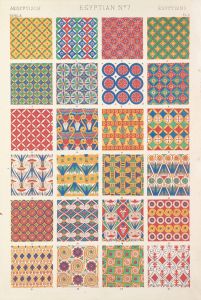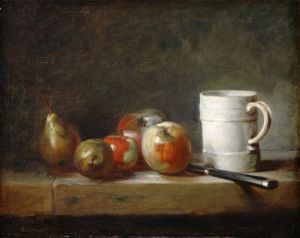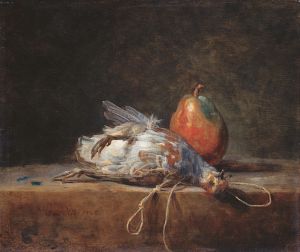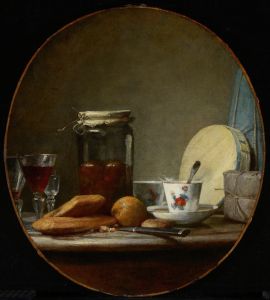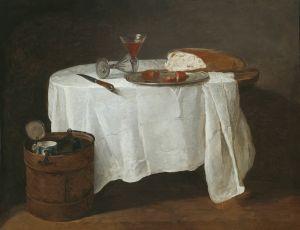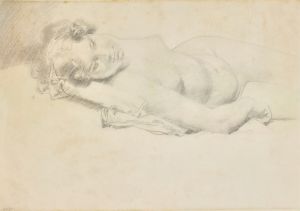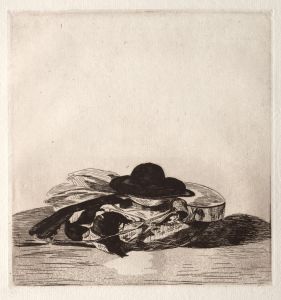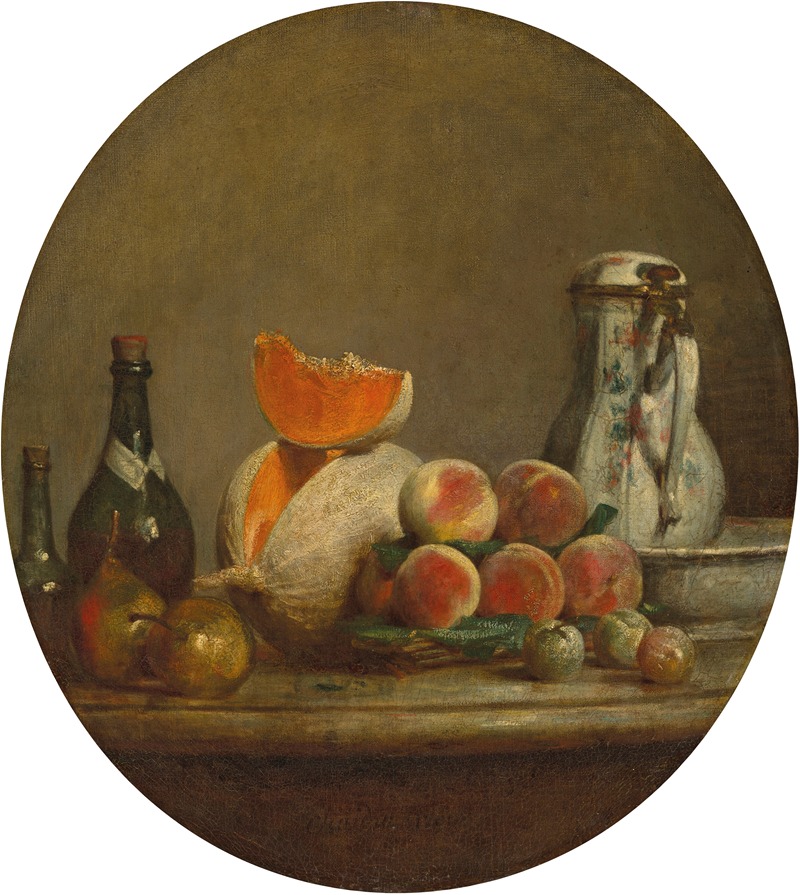
Le Melon
A hand-painted replica of Jean Siméon Chardin’s masterpiece Le Melon, meticulously crafted by professional artists to capture the true essence of the original. Each piece is created with museum-quality canvas and rare mineral pigments, carefully painted by experienced artists with delicate brushstrokes and rich, layered colors to perfectly recreate the texture of the original artwork. Unlike machine-printed reproductions, this hand-painted version brings the painting to life, infused with the artist’s emotions and skill in every stroke. Whether for personal collection or home decoration, it instantly elevates the artistic atmosphere of any space.
Jean Siméon Chardin's painting Le Melon (The Melon) is a still life artwork created by the French artist, who is widely regarded as one of the most significant painters of the 18th century. Chardin, known for his mastery in depicting everyday objects and domestic scenes, often focused on the beauty of simple, ordinary subjects. His works are celebrated for their subtle use of light, texture, and composition, which elevate mundane objects into timeless art.
Le Melon exemplifies Chardin's skill in still life painting. The artwork portrays a sliced melon alongside other objects, arranged with meticulous attention to detail. Chardin's use of soft, natural lighting and muted tones creates a sense of harmony and realism, drawing the viewer's attention to the textures and forms of the depicted items. The painting reflects Chardin's ability to capture the essence of his subjects, emphasizing their materiality and presence.
Chardin's still lifes, including Le Melon, were highly regarded during his lifetime and continue to be appreciated for their technical excellence and quiet beauty. His works often convey a sense of tranquility and introspection, qualities that distinguish them from the more ornate and dramatic styles of his contemporaries in the Rococo period. Chardin's approach to still life painting influenced later artists and contributed to the development of modern art.
The exact date of creation for Le Melon is not definitively documented, but it is consistent with Chardin's body of work from the mid-18th century. The painting is part of a broader tradition of still life art in Europe, where fruits, vegetables, and other everyday items were used to explore themes of abundance, transience, and the passage of time. Chardin's interpretation of these themes is subtle and understated, focusing on the quiet dignity of his subjects.
As of the latest available information, Le Melon is housed in a museum collection, though specific details about its current location or provenance are not widely documented. Chardin's works are represented in major art institutions around the world, including the Louvre in Paris, which holds a significant number of his paintings.
This painting, like much of Chardin's oeuvre, demonstrates his ability to transform ordinary objects into extraordinary works of art, inviting viewers to appreciate the beauty in the everyday.






